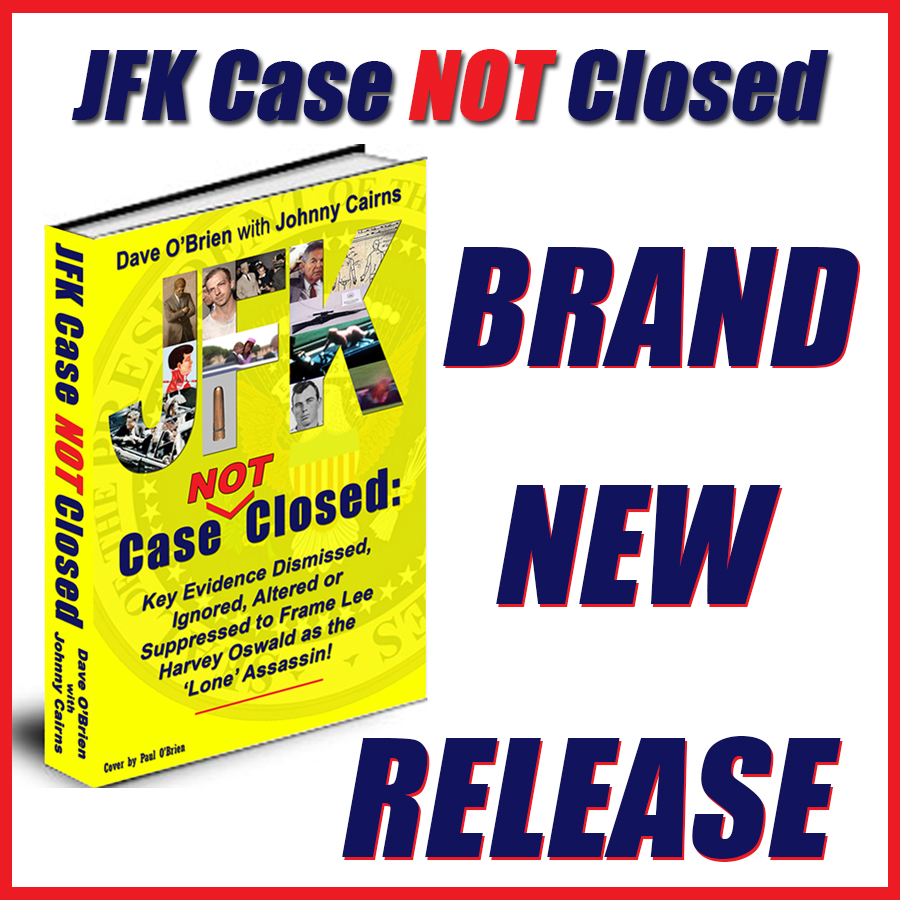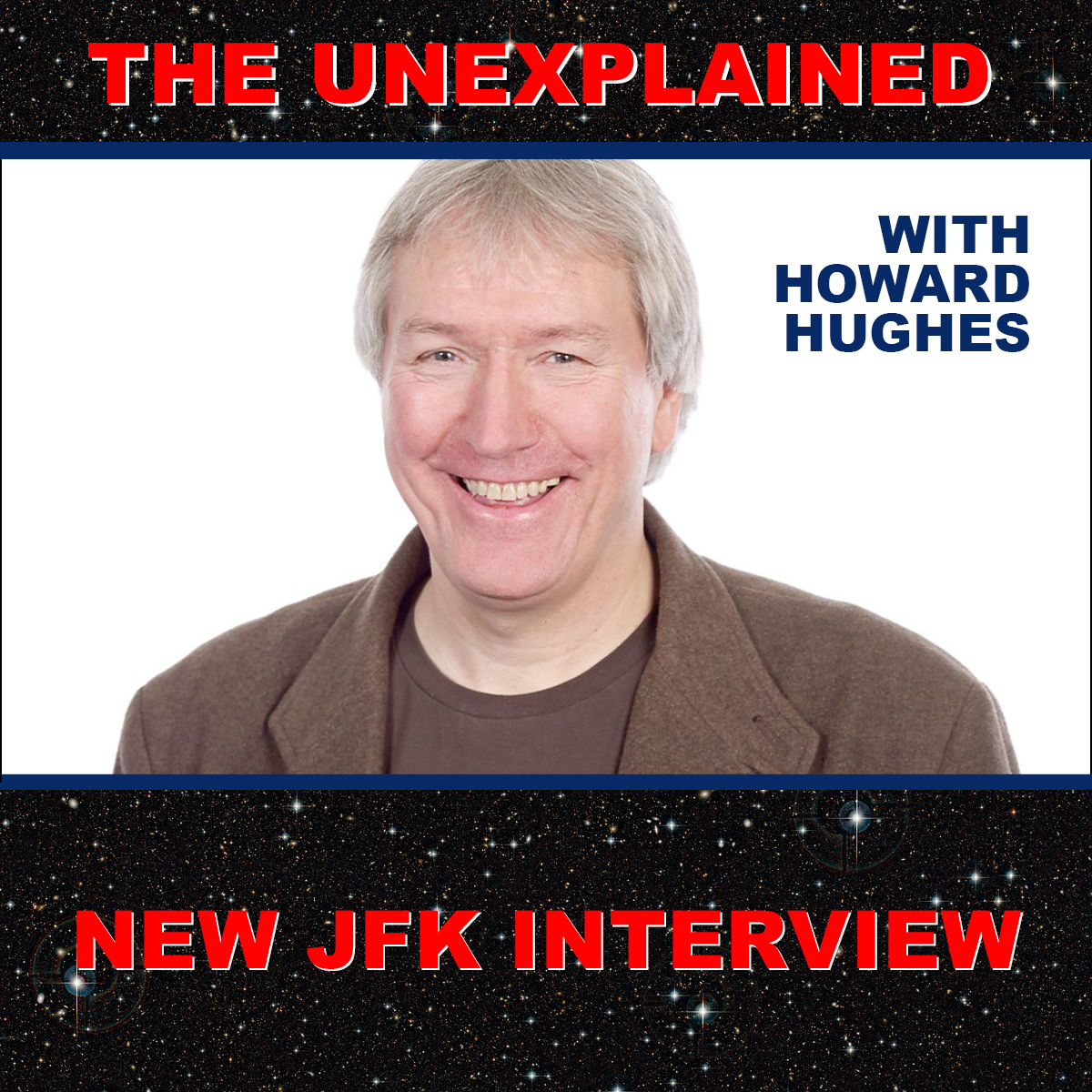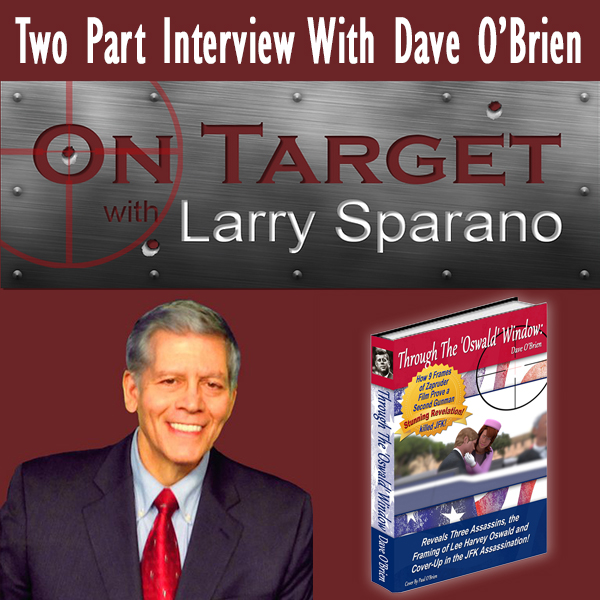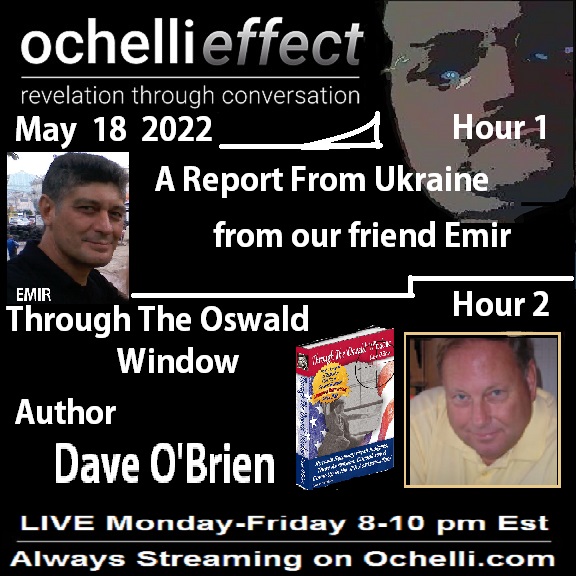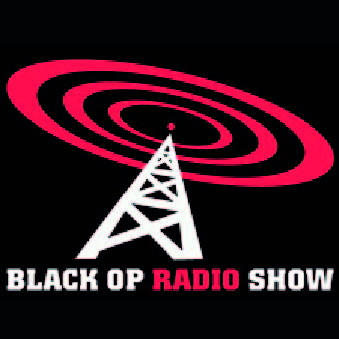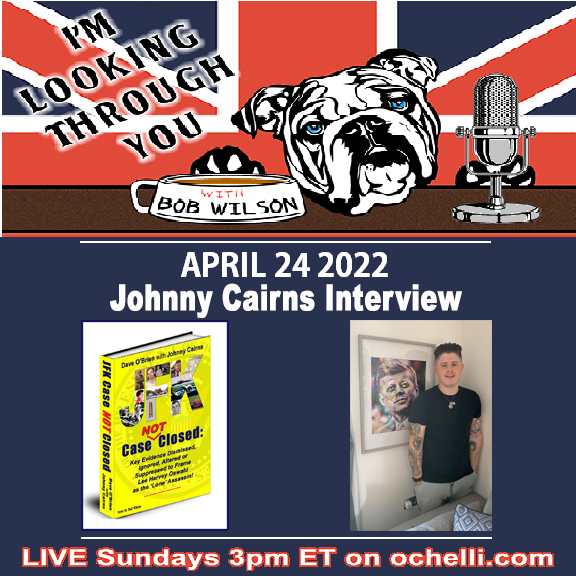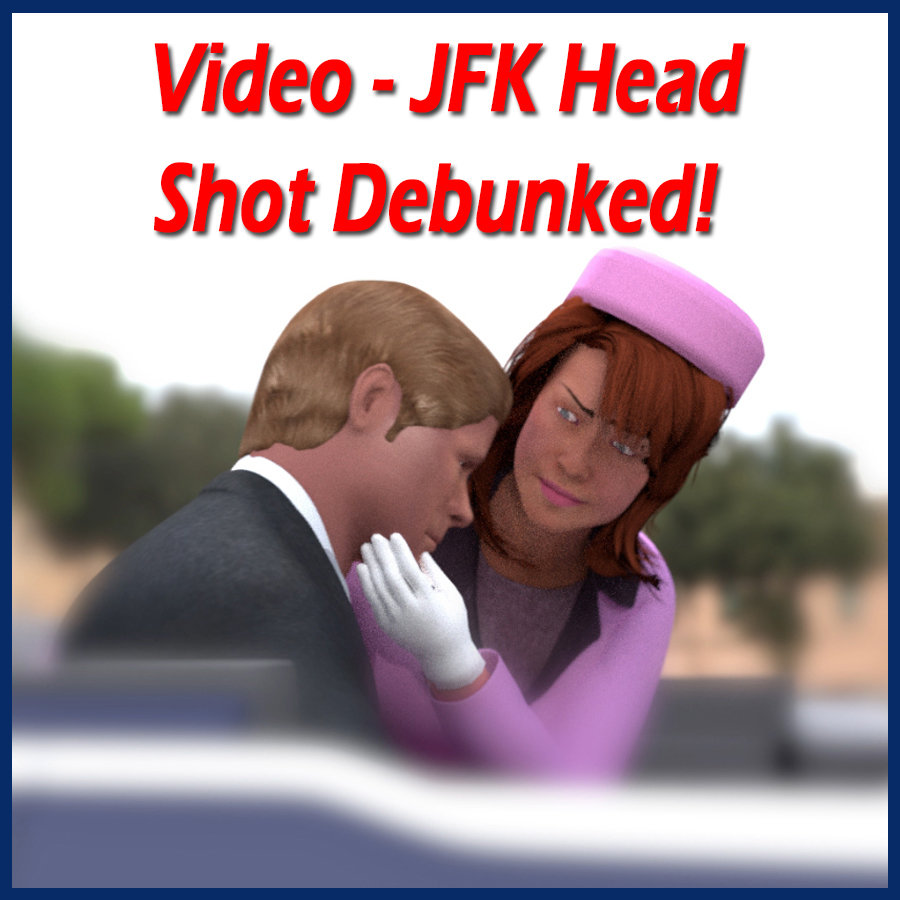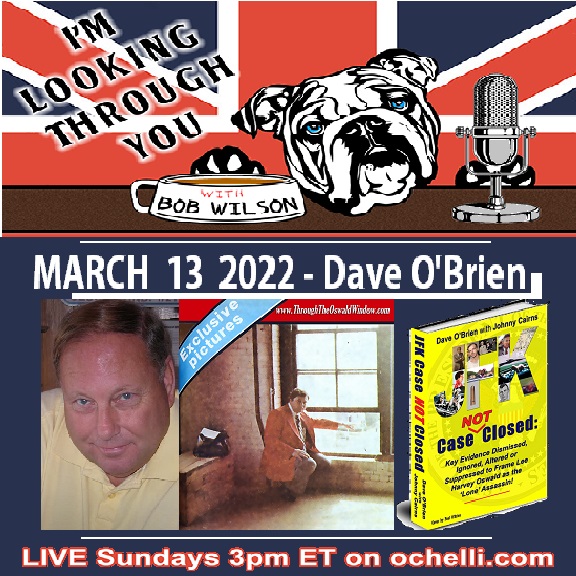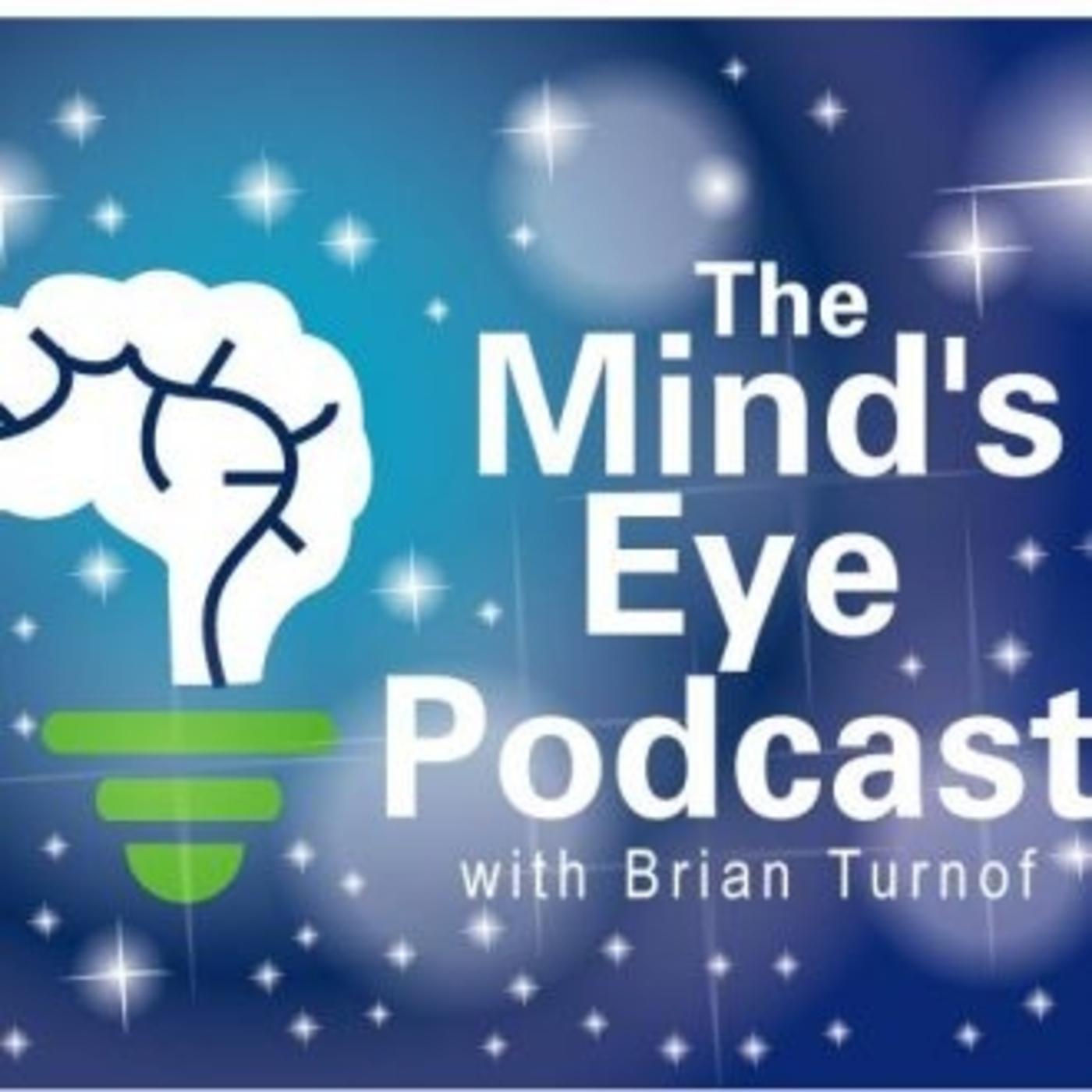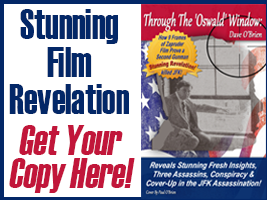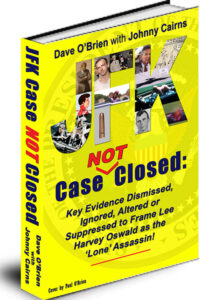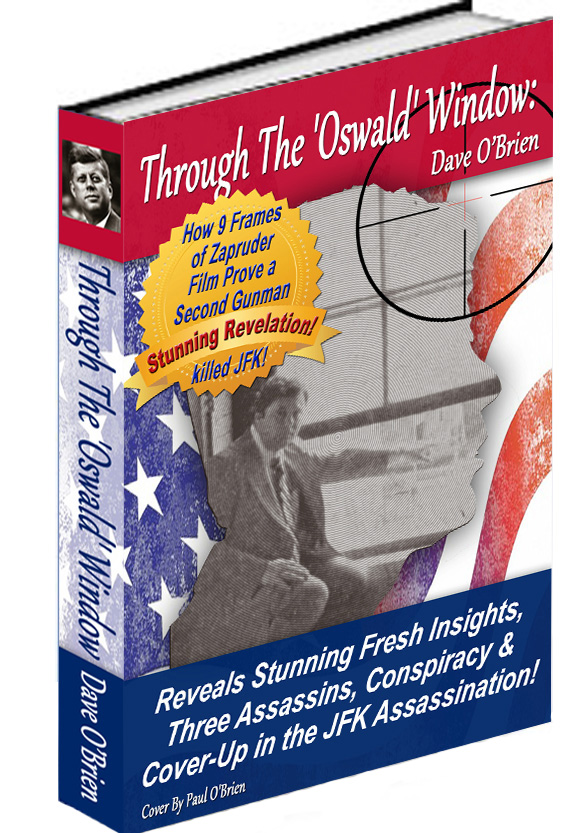From Dallas to the Garrison Investigation and Beyond, Have More than 100 JFK Assassination Mysterious Deaths Helped to Bury the Truth?
by Dave O’Brien
By the time Bobby Kennedy was murdered in 1968, a growing list of JFK assassination mysterious deaths had already reached 40 people, all of them somehow associated to the events of November 22, 1963 in Dallas.
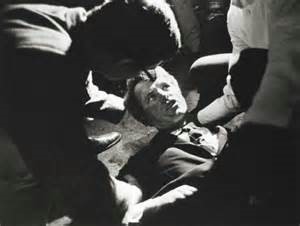
These people ranged in age and all aspects of life. Some were witnesses to that horrible event. Some were instantly thrust into history as an emergency room attendant at Parkland Hospital, or perhaps a co-worker of either Lee Harvey Oswald or Jack Ruby.
Still others had a chance rendezvous with history and immortality like J.D. Tippit, the Dallas police officer who allegedly confronted an escaping Oswald 45 minutes after the assassination and paid for that brief encounter with his life.
It won’t surprise you that more than 5 ½ decades later, hundreds of people with some kind of link to the JFK assassination have died.
All the Warren Commission members are dead. Almost all the doctors who tried to save his life are dead. Governor John Connally is dead.
The assassin’s assassin is dead. And the majority of witnesses on that fateful day are dead, most of them naturally surrendering to time.
Time catches up to all of us, but for approximately 100 of these people, it wasn’t time that took them. They can never be erased from their tiny spot in our history books.
Rather, it was unusual circumstances, unexplained suicides and even cold-blooded murder that claimed far too many of these lives.
ODDS DEFY BELIEF
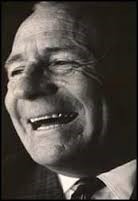
Just three years after President Kennedy was killed, Midlothian, Texas journalist and researcher Penn Jones Jr. began documenting the unusual deaths of people somehow associated to that tragic day.
He noted that 18 people had died (not counting Lee Harvey Oswald or Jack Ruby) by the end of 1966, all of them linked by a small or significant part they played in the death of the country’s 35th President.
Penn Jones was one of the earliest critics of the Warren Commission findings, starting a newsletter titled ‘The Continuing Inquiry’ that inspired this young journalist and brought us together for an ‘official’ JFK assassination tour in Dallas in 1979.
His work brought serious questions to light about the Warren Report findings and gave birth to other noted researchers and authors. At first, the deaths reported by Jones were dismissed as natural or at best, a curious coincidence.
The London Sunday Times decided to look into this coincidence by employing an actuary to study the odds. It then published its bombshell findings, noting that:
To put that into perspective, the odds of you winning a $500 million New York Mega Millions lottery is:
1 in 258,890,850
Suddenly, the 18 JFK-related deaths within 36 months caught people’s attention and prompted a very compelling question:
How do we explain this astounding actuarial finding?
Keep in mind that just three years removed from that shocking event, the vast majority of Americans believed the key findings of the Warren Report, namely that:
A) Lee Harvey Oswald acted alone in shooting President Kennedy.
B) Jack Ruby acted alone in shooting Lee Harvey Oswald.
So, beyond a bizarre coincidence, what else might explain why these 18 people, and counting, would die so soon after the President?
If the above conclusions by the Warren Commission are correct, then nothing but coincidence can explain these deaths, despite the massive odds against it happening.
However, if President Kennedy died because of a conspiracy and a cover-up ensued, as argued in the final chapter of Through The ‘Oswald’ Window, perhaps these deaths are more than mere happenstance.
Beyond the first three years that followed the assassination, many other mysterious deaths occurred, including some famous and infamous names.
Here’s a look at some of the peculiar deaths relating to the JFK murder, starting with the President’s own brother.
ROBERT F. KENNEDY
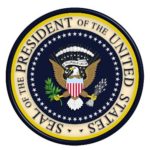
We all know how Bobby Kennedy was killed, but is there a why behind it that ties into the death of his older brother?
Robert F. Kennedy Jr., the late Attorney General’s son, says “Yes.” In 2013, RFK Jr. told Charlie Rose of CBS News and PBS that his father never believed that Oswald acted alone.
His father suspected that organized crime may have been involved because of the heat his Justice Department was putting on the mob. It was a terrible burden to think that he may have caused his brother to be killed.
RFK Jr. stops there, but his comments raise the possibility of one very personal reason why his father decided to seek the presidency in 1968.
JFK’s successor, Lyndon Johnson, appointed the Warren Commission and when it submitted its 26-volume report, Johnson declared thousands of documents as “Classified’ or ‘Top Secret’ and imposed a 75-year ban on these materials, sealed away until 2038 by presidential signature.
The only way Bobby Kennedy could access those documents and get to the truth was to become President of the United States. That’s part of what motivated him to seek the highest office in the land when he was gunned down in Los Angeles.
Was Sirhan a lone assassin? Or were there powerful forces at play, such as those described in chapter 12 of Through The ‘Oswald’ Window, that couldn’t risk the truth coming to light?
One intriguing hint comes from Louisiana mob boss Carlos Marcello himself. He wanted the Attorney General killed, but understood that by killing President Kennedy instead, he was also getting his wish.
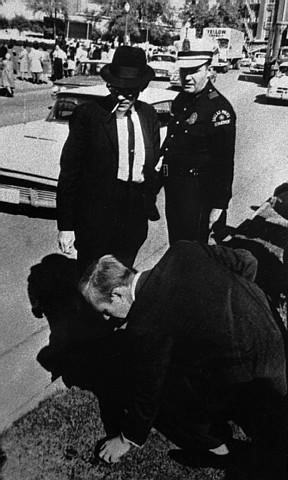
E.R. BUDDY WALTHERS
Walthers was a Dallas Deputy Sheriff who was at Dealey Plaza when President Kennedy was shot.
The photo at left shows Deputy Sheriff Walthers (standing with dark hat) searching the grass on Elm Street, the opposite side of the grassy knoll, immediately following the shots in Dealey Plaza.
Walthers told some of his fellow officers that he found a badly damaged .45-caliber bullet in the grass but turned it over to a man identifying himself as a Secret Service agent (the man crouching in the photo?).
This was problematic for the Warren Commission because this bullet could not have been fired from the Oswald rifle found in the Book Depository Building.
Strangely, Walthers had a change of tune. When he appeared before the Warren Commission, he said he had no recollection of finding a bullet at the assassination site.
Privately, Walthers continued to vary his story, depending on who he was telling it to, right up until January of 1969 when he was shot on duty and killed.
LEE BOWERS JR.
Working that day in a railroad control tower, Lee Bowers had a unique view of the goings on in Dealey Plaza. His elevated position allowed him to see the hidden side of the picket fence on the grassy knoll.
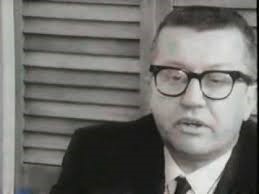
More than 40 witnesses reported hearing a shot come from behind the picket fence up on the knoll, putting a potential shooter on the side of the fence that Bowers could see.
Bowers testified before the Warren Commission that he saw two unfamiliar men along that fence line, standing under a tree. It was bright and sunny at 12:30 p.m. when the shots rang out, but the shade and branches from that tree blocked the activity taking place.
One man was heavy-set and middle age and the other man was in his 20’s and wore a plaid shirt or jacket.
Bowers reported to the Commission that he heard three shots and saw a puff of smoke come from the area of the two men.
This ‘puff of smoke’ sighting was seconded by witness Sam Holland, who was standing on the triple overpass bridge on Elm Street as the motorcade approached. The grassy knoll and picket fence were to his left.
When Holland took on-site police to where he saw the puff of smoke, it coincided with where Bowers saw the two men and a small cloud arise. There were scattered footprints in the area.
Immediately after the shots, pandemonium ensued. Bowers was distracted by the commotion and when he looked back at the spot where he saw the smoke, the two men were gone.
On August 9, 1965, Lee Bowers lost control of his car in good driving conditions and hit a concrete bridge abutment.
Before he succumbed to his injuries, he told hospital workers that he felt woozy after he stopped and bought a coffee. Tests only confirmed that he was free of alcohol.
HANK KILLAM
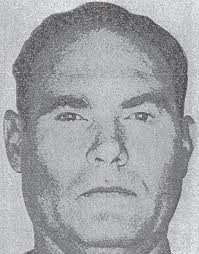
Hank Killam is linked to Jack Ruby by his wife Wanda, who served drinks and cigarettes at Ruby’s Carousel nightclub.
Killam is also linked to Lee Oswald by John Carter, who briefly roomed with Oswald in Dallas and worked with Killam as a house painter.
In the months that followed the JFK assassination, Killam felt unsafe in Dallas. He fled to Pensacola, Florida to be near family.
His brother Earl called him “The Man Who Knew Too Much” and said that his brother felt he was being followed and harassed.
Just before his strange death, Earl quotes his brother as saying, “They’re going to get me. I’ve run as far as I’m going to run.”
Earl Killam also told researchers that his brother Hank, in early November of 1963, overheard John Carter on the phone saying that JFK would be killed in Dallas.
On March 17, 1964, the police report says Killam ‘walked’ through a plate glass window of a department store in Pensacola, severing his jugular vein and causing him to bleed out before an ambulance arrived.
The death was ruled a suicide. When coroner A.H. Northup reviewed the files after the case was closed, he described the wound as a single deep gash in the throat and called it “a very strange way to try to kill himself.”
There was blood inside the store and signs of a struggle, but no witnesses were ever found.
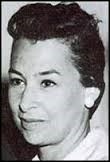
DOROTHY HUNT
Dorothy Hunt was the wife of E. Howard Hunt, the former CIA operative who was convicted of being part of the Watergate break-in. Many believe Hunt is one of the ‘three tramps’ taken into police custody in the minutes following the JFK assassination.
Mrs. Hunt died in a plane crash on December 4, 1972 when a United Airlines plane went down from Washington to Chicago.
This occurred as the Watergate affair was gaining steam. As aired by Toronto CFTR radio reporter Clint Nickerson on the program ‘Thou Shalt Not Kill,’ 10 other people linked to Watergate also perished in the crash, along with a suitcase of suspected payoff cash that was never recovered at the scene.
CBS news reporter Michele Clark was accompanying Dorothy Hunt on the flight. It is believed that Mrs. Hunt had a CIA document on her that Ms. Clark was going to publish.
It apparently divulged that the CIA was directly linked to political assassinations abroad, specifically failed attempts against Fidel Castro and the successful murder of South Vietnam leader Ngo Dinh Diem just 20 days before President Kennedy went to Dallas.
The National Transportation Safety Board ruled pilot error although data recovered from the plane suggests he was silent and unresponsive for a good couple of minutes before the crash.
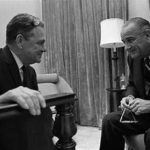
HALE BOGGS JR.
Another plane crash took the life of Hale Boggs Sr., the Louisiana congressman and House Majority Whip when JFK was killed.
On October 16, 1972, Boggs’ plane left Anchorage for Juneau, Alaska but never arrived. The plane, nor the bodies of Boggs or three others, were ever found.
Boggs became one of the seven Warren Commission members recruited by President Lyndon Johnson.
He refused to sign off on the ‘single bullet theory’ and publicly voiced dissatisfaction with the Warren Commission proceedings, specifically the lack of cooperation from the FBI, which was the chief investigative arm of the Commission.
When the Warren Report was released, Boggs, as well as Senators Richard Russell and Sherman Cooper, disagreed with the Commission’s findings that both Oswald and Ruby acted alone.
They sought to write a minority report to distance themselves from the Warren Commission findings but were denied. Boggs would not stay silent about his dissention before his death.
SAM GIANCANA AND JOHNNY ROSELLI
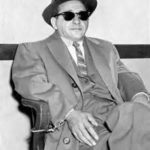
Both Sam Giancana and Johnny Roselli lived the gangster lifestyle in Chicago and both mobsters died by the means they used to kill others.
Giancana was top boss of the Chicago crime syndicate who famously shared a lover with JFK named Judith Campbell Exner.
He also struck a deal with Joe Kennedy to stuff the ballot box in Illinois and help his son win the presidency. It worked.
Roselli was a ‘capo’ (Made Man) in the Giancana family who helped his organization gain control of illicit activities in Hollywood and Las Vegas. He became good friends with Frank Sinatra, who was close with JFK and Peter Lawford.
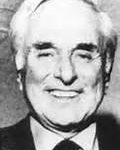
Giancana and Roselli were recruited by the CIA to help privately fund assassination attempts against Fidel Castro, who Roselli would later claim turned the tables on Kennedy.
Both Giancana and Roselli were called to testify about the Castro plots before the U.S. Select Committee on Intelligence in 1975.
Roselli was to appear a third time on April 23, 1976 pertaining to a possible conspiracy to kill President Kennedy. He never showed up or was ever again seen alive.
Giancana never lived to testify a first time. He was found dead June 19, 1975 in his basement kitchen with a gunshot wound to his head, as well as six circular shots around his mouth, a Mafioso warning to others to keep their mouth shut.
As for Roselli, his decomposing body was found in a 50-lb metal drum off the shores of Miami on August 9, 1976.
Before his death, Roselli told noted investigative reporter Jack Anderson that Jack Ruby was ordered to take out Oswald.
DOROTHY KILGALLEN
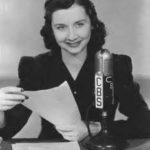
One of the more famous deaths associated with the Kennedy assassination is that of Dorothy Kilgallen.
In the early 1960’s, Kilgallen was a noted journalist for the Journal American and CBS news. But millions of Americans knew her best as a regular panelist on the popular TV game show ‘What’s My Line?’
As a reporter, Kilgallen wrote an article exposing a sexual relationship between President Kennedy and Marilyn Munroe.
Two days later, on August 5, 1962, the iconic Hollywood actress was found dead of a suspected overdose.
Several weeks before the Warren Report was released to the public, Kilgallen secured a copy of Jack Ruby’s June 07, 1964 testimony before the Warren Commission.
She reprinted Ruby’s testimony in the Journal American, which caused alarm bells to go off as it appeared he was hiding more than he was revealing.
Kilgallen was skeptical and was able to use her journalistic clout to get an exclusive private sit down with Jack Ruby in a Dallas courtroom. Dorothy Kilgallen came out of that meeting and proclaimed,
She would not disclose details of that meeting pending a full story that would soon appear in publication.
It did not happen.
Just two weeks later, on November 8, 1965, Ms. Kilgallen was found dead in her Manhattan apartment. The death was ruled a suicide by alcohol and barbiturate poisoning.
Close friends claim that Dorothy Kilgallen was not a drinker and question the timing of killing herself when she appeared so excited about having the ‘scoop of the century!’
Two other oddities add to the suspicious cause of death.
No notes from the Jack Ruby interview were ever found in her apartment or office. And a good friend, Mrs. Earl Smith, died two days after Ms. Kilgallen from blunt trauma to the throat. That murder remains unsolved.
Strangely, New York District Attorney Cyrus Vance announced his office was re-opening the Kilgallen death in early 2018 based on new evidence, but then abruptly ended his investigation close to JFK’s 55th anniversary of his death.
JOSEPH A. MILTEER
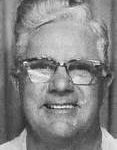
Joseph Milteer was President of the Georgia chapter of the White Knights of the Ku Klux Klan. He was also a right-wing activist for the National States Rights Party and the Constitution Party, both racist organizations with some powerful backers in the south
Two weeks before JFK’s trip to Dallas, Milteer was recorded talking to Miami police undercover cop William Somersett, posing as a militant sympathiser.
In the recording, Milteer is heard saying the murder of the President was “in the working,” and that the best way to do it is “from an office building with a high-powered rifle,” even commenting that “they will pick up somebody within hours afterwards to throw the public off.”
Somersett passed along these comments to the Secret Service and called them credible. Before a planned motorcade in Miami was publicly announced, it was called off.
After the events in Dallas, Somersett contacted Milteer, who seemed jubilant and remarked “everything ran true to form. I guess you thought I was kidding when I said he would be killed from a window with a high-powered rifle.”
The Warren Commission became aware of Milteer’s prediction quite late in its mandate and did not pursue it.
Joseph Milteer died in his home in 1974 when a portable Coleman heating stove exploded.
JIM GARRISON’S DEAD WITNESSES
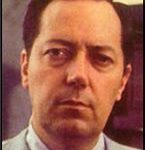
In 1966, New Orleans District Attorney Jim Garrison began an investigation into the JFK assassination after learning that Lee Oswald had spent time in the area, was related to local mob bookmaker Dutz Murret, and was associated with known criminal David Ferrie.
Garrison brought conspiracy to murder charges against Clay Shaw, a New Orleans businessman and associate of David Ferrie, whom Garrison had linked to Louisiana organized crime boss Carlos Marcello.
Shaw was found not guilty and the Garrison investigation was widely discredited for its lack of evidence.
Garrison publicly defended his case against Shaw and claimed that more people may have faced charges if the government hadn’t been able to squelch so many of his subpoenas for documents and witnesses.
During his investigation, key witnesses to be called by Garrison died, keeping the possibility alive in the eyes of conspiracy theorists that District
Attorney Garrison may have been on to something. Here are a few of those witnesses who may have taken secrets with them to their graves:
ELADIO CEREFINO del VALLE
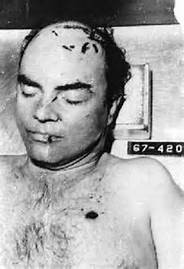
When Cuban defector Manuel Garcia Gonzales was seen in a photo with Lee Harvey Oswald, del Valle identified him as an Oswald co-conspirator in the assassination of JFK.
According to Garrison, del Valle was going to swear in court during the Shaw trial that Oswald also knew Ferrie. A photo shows the two men together at a Civil Air Patrol camp in 1955.
Garrison claims that Ferrie had a homosexual relationship with Shaw and that Ferrie was the private pilot who flew Marcello back into the U.S. after Bobby Kennedy had him deported to Guatemala.
Eladio del Valle was key to Garrison linking Oswald to both the CIA through Ferrie and top Mafioso Carlos Marcello via both Ferrie and Oswald’s uncle Dutz Murret.
Before he was called to testify, del Valle was found mutilated in the trunk of his red Cadillac. He was severely beaten, shot once above the heart and stabbed in the head.
DAVID FERRIE
Just one day before Eladio del Valle was murdered, key JFK assassination suspect and witness David Ferrie died in his home, penning two suicide notes on the day the coroner ruled death was caused by intracerebral hemorrhage.
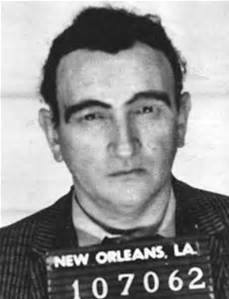
Ferrie was an odd-ball character, wearing fake eyebrows and a flaming red wig, who worked as a private investigator for one of Carlos Marcello’s lawyers.
A 1955 photo proves Ferrie and Oswald knew each other when the two were members of the New Orleans chapter of the Civil Air Patrol.
David Ferrie was a former disgraced Eastern Airlines pilot who Garrison believes privately flew Marcello back into the U.S. in defiance of Bobby Kennedy’s less than legal deportation order.
Garrison also asserted that Ferrie was assigned to get Oswald out of Dallas after the assassination, only to return home when Oswald was apprehended while attempting to rendezvous with Ferrie.
In 1978, the House Select Committee on Assassinations learned that a cellmate of Louisiana mob boss Carlos Marcello taped him in the exercise yard.
Marcello admits to meeting Oswald through David Ferrie and got Ferrie to bring Oswald into the assassination plans.
In the Oliver Stone movie JFK, David Ferrie, played by Joe Pesci, is shown in a panic over having to testify at the Clay Shaw trial, claiming it would be the death of him.
Ferrie’s death was a key blow to the Garrison trial not just because of his connection to Shaw, but the flamboyant District Attorney was also hoping to go after Carlos Marcello for conspiracy to murder the President of the United States.
MAURICE GATLIN
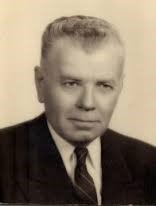
Maurice Gatlin was also a pilot under contract with Guy Banister, who Garrison was building a case against because of his connections to David Ferrie, Lee Oswald, Carlos Marcello and the CIA.
Banister was an ex-FBI agent and New Orleans cop who started his own private investigative firm.
Banister’s office was in the same building identified on literature as the home office for Oswald’s ‘Fair Play for Cuba Committee.’
Gatlin got involved with Banister as a gun-runner and money delivery man and could tie crates of guns, grenades and ammunitions to Banister’s office.
The New Orleans States-Item newspaper reported that Banister was a key supplier of munitions for the 1961 Bay of Pigs Invasion. If plane drops of munitions were required, Garrison believed that Ferrie and Gatlin were the pilots involved.
Several people reported seeing Banister’s office always filled with crates of munitions, as well as repeated sightings of Ferrie and Oswald at Banister’s place of business.
Garrison believed that Gatlin could place Ferrie, Oswald and Banister together and tie them to CIA black-ops pertaining to the Bay of Pigs and Fidel Castro assassination attempts.
Garrison also believed that Gatlin could connect these three individuals to mafia chieftain Carlos Marcello via his deportation lawyer G. Wray Gill. When Marcello had to sneak back into the U.S., his lawyer had two veteran private pilots at his disposal – David Ferrie and Maurice Gatlin.
Gatlin had come to Garrison’s attention in the early stages of his investigation but died before being interviewed by the D.A.’s office. Gatlin apparently suffered a heart attack, which caused him to fall six floors from a hotel balcony.
Of course, the most famous JFK-related death is when Jack Ruby shot Lee Harvey Oswald on November 24, 1963. It became the first murder ever caught on live television, making millions of Americans actual witnesses to history. The Warren Commission concluded that Ruby acted alone in taking out revenge against the President’s assassin.
Just like Oswald, we have to wonder what information has been taken to the grave by more than 100 people who have become members of a fraternity of JFK assassination mysterious deaths!
Note: This article is dedicated to Penn Jones Jr., friend, author, pioneer JFK assassination researcher and relentless seeker of the truth. Hopefully, one day, we can finish the job he so relentlessly investigated.
